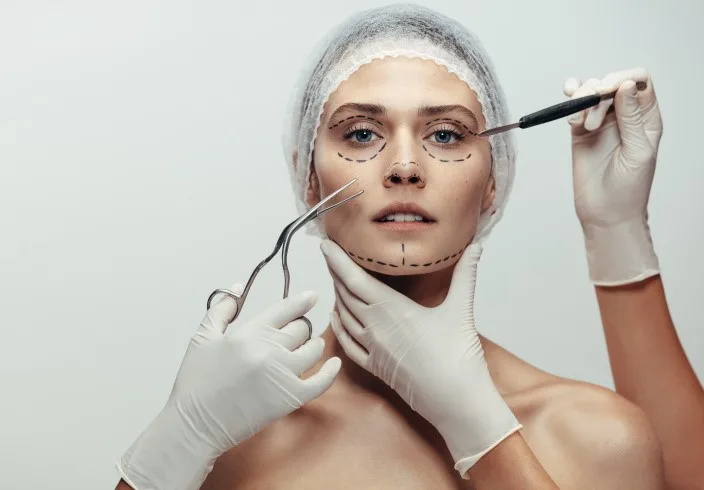Plastic surgery has been with us for far longer than many of us imagine. Believe it or not, texts and imagery referring to cosmetic surgery extend back to ancient Egypt. The quest to make ourselves more attractive seems to be an inherent part of the human psyche, and why not? The strive to appear more alluring and attractive as a mate is a trait common among many species.
While facial reconstruction methods advanced greatly during the early part of the twentieth century, cosmetic plastic surgery remained firmly entrenched in the ‘pull it and pin it’ technique well into the ’90s. According to Melbourne-based plastic surgeon Dr Chris Moss, a pioneer in the field of facial anatomy, it was only when a holistic approach to facial aging was implemented, that truly natural, rejuvenation results were possible.
Let’s Compare: Plastic Surgery Then and Now.
We’ve all heard of the ‘wind tunnel’ effect which was sported by numerous socialites and celebrities last century. This effect was caused by treating the problem rather than the cause of facial aging. By addressing the skin only, doctors were providing patients with tighter skin but offered only short-lived results and rather than making them look younger, often had the reverse effect.
Surgeons now appreciate that facial aging involves more than the outer layer of skin. As we age the underlying muscle and tissue shrinks, collagen breaks down and the whole effect means the supporting structures of our face give way. This results in, among other things, the cheeks to drop forming jowls and nasolabial folds, and the brow and eyelids to lower resulting in a haggard, hard appearance.
In the early 2000s, doctors speculated that fat transfer could remedy this situation. One advocate likened the face to a grape which is firm and juicy when young but when old, hydration and other effects of aging, turn it into a raisin. Simply tightening the outer skin is not going to return the look of a grape – it is going to give you a pea-like result. Instead, the skin needed to be plumped subcutaneously.
Unfortunately, autologous fat transfer has not proven to be the cure-all it was hoped to be. Hollywood celebrities who overindulged in fillers were dubbed ‘pillow faces’ and it was back to the drawing board. It has now been accepted by many surgeons that, since the face ages in a variety of ways, the only truly natural results can be gained by addressing these with a multi-pronged approach.
Also Read: Common Cosmetic Surgeries to Boost Your Confidence
Multiple Modalities
The solution to natural results is not a one size fits all approach. Instead, surgeons need to consider the unique facial and neck aging of each patient individually. While some younger patients may be suitable to simply address one area, in older patients looking for a more youthful appearance, multiple modalities are often the best solution. Optimum results are obtained by a facelift used in combination with some or all of the following:
- Liposuction – to the jowl or under the chin, usually used in conjunction with a face or neck lift. This provides a superior and longer-lasting result.
- Fat transfer or other facial fillers – these are used to replace the muscle and fat loss caused by aging. While they provide only a minor lifting effect they will result in a softer, more youthful appearance and, in the case of autologous fat transfer, if performed expertly can also contribute ongoing improvements to the skin and underlying tissue through the introduction of live cells.
- Skin resurfacing – either through laser or skin peels, these can reduce fine lines and lessen tell-tale signs of aging.
- Muscle/wrinkle relaxants – products such as Dysport and Botox can be used to add the finishing touches to any facial rejuvenation. They may be of particular benefit when used in combination with fillers, to reduce movement and make for longer-lasting results.
Body Matters
Fat transfer is also an option for those seeking breast enhancement without the use of implants. The continuing refinements to the way fat is harvested and stored are making this a viable alternative in some patients.
Aside from breasts, implants are now being used with some success for a range of other body areas including:
- cheeks
- chin
- Buttocks
- Abdomen (to give a six-pack)
Be Cautious
One constant to any effective cosmetic surgery rejuvenation is going to be downtime. So-called lunchtime facelifts are either misleadingly named or pure false advertising – either way they should be avoided.
Remember, if it sounds too good to be true, it probably is. To ensure long-lasting and appreciable results when treating facial aging a plastic surgeon must address the underlying structures of the face, manipulating these areas extensively – there are no shortcuts. Expect downtime of two weeks to a month before you feel absolutely comfortable going out socially.
Also Read: Tried & Proven Strategies for Selling Your Cosmetic Brand
The Rewards
Plastic surgeons are now better trained and have more expertise than any other time in history. Well executed, plastic surgery can reinvigorate your lust for life and give you a confidence you never could have imagined.
If you are interested in finding out how you can transform your life through plastic surgery, today may just be the day to start the journey to an improved you.







